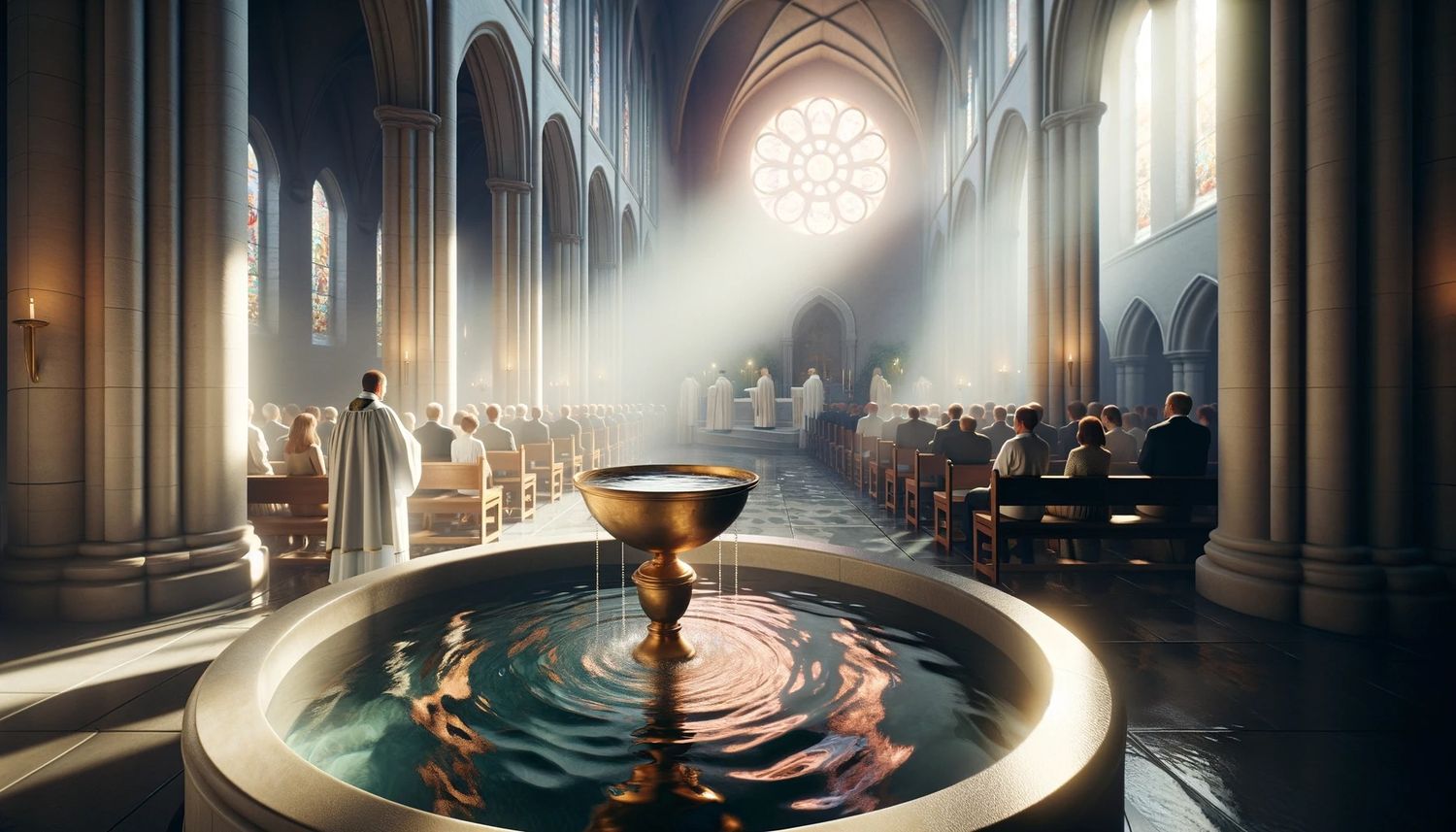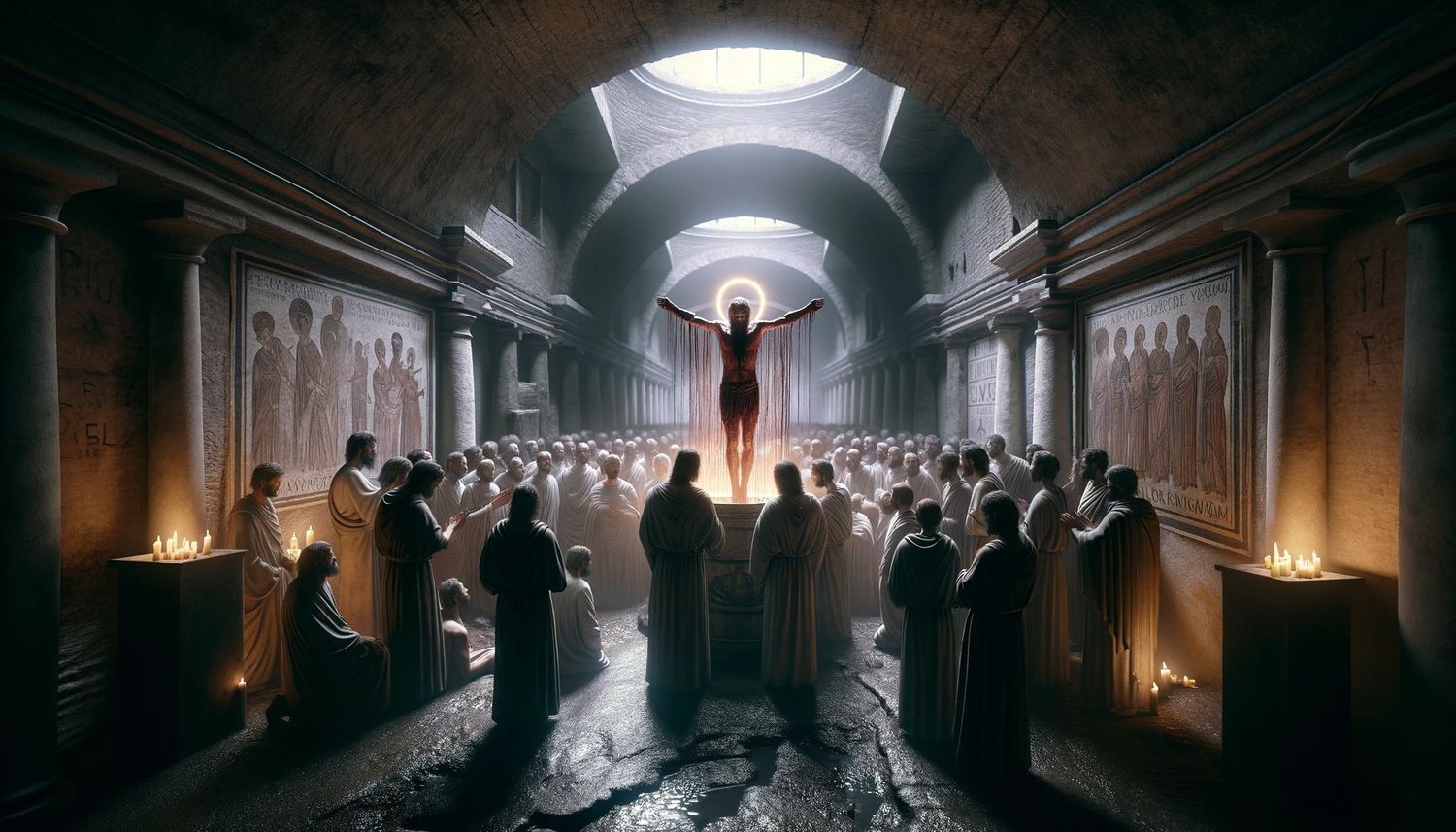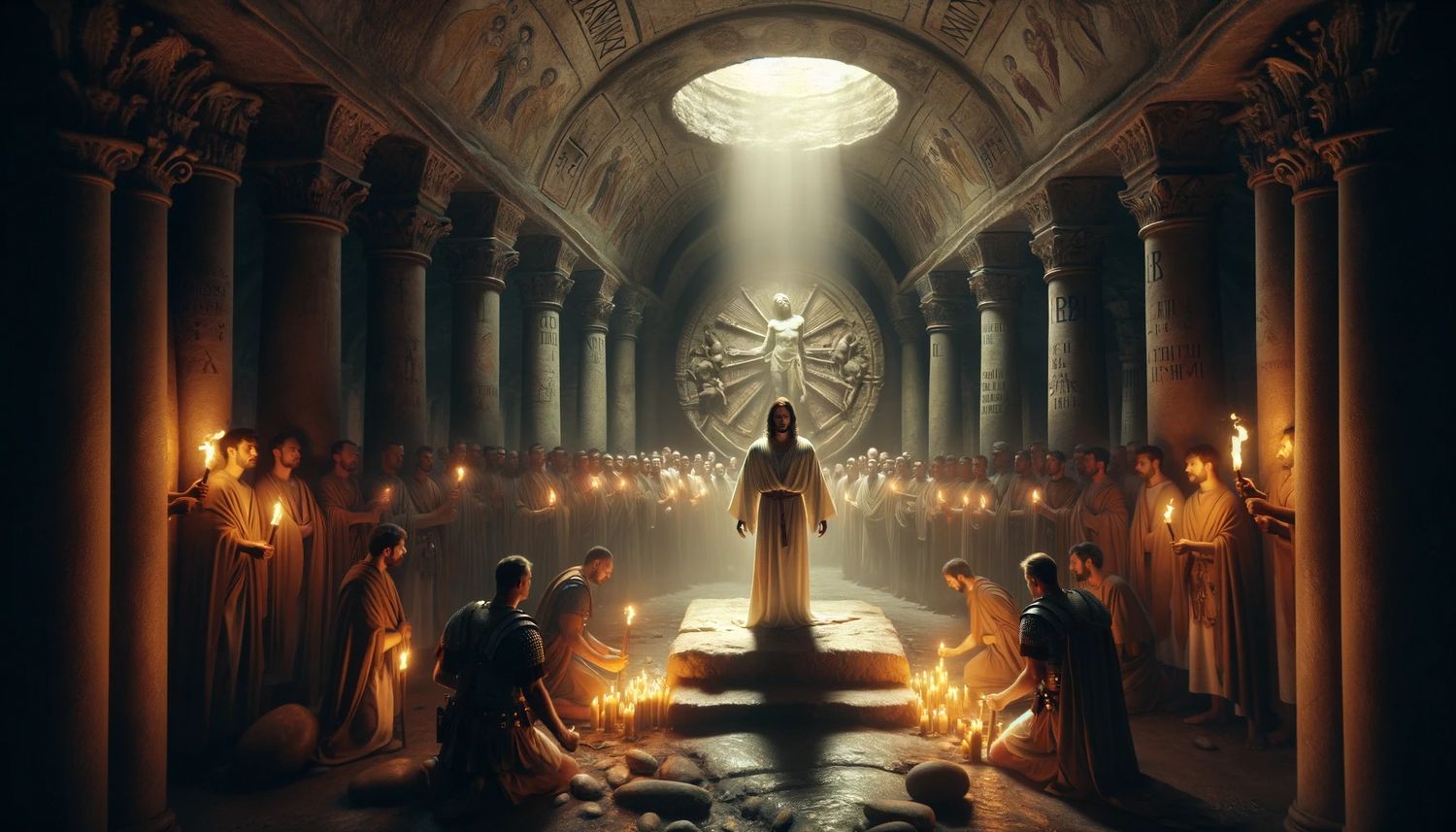Home>Theology and Spirituality>What Are The Things Used In Baptism


Theology and Spirituality
What Are The Things Used In Baptism
Published: March 1, 2024
Ericka Andersen, an editor at Christian.net, expertly merges digital strategy with content creation, focusing on faith and societal issues. Her communication skills enhance the platform's engaging narratives, fostering meaningful dialogue on belief's impact on society.
Discover the essential items used in baptism and their significance in theology and spirituality. Explore the symbolism and rituals of this sacred sacrament.
(Many of the links in this article redirect to a specific reviewed product. Your purchase of these products through affiliate links helps to generate commission for Christian.net, at no extra cost. Learn more)
Table of Contents
Introduction
Baptism is a significant sacrament in many Christian traditions, symbolizing the cleansing of sin and the initiation into the faith community. It is a sacred ritual that involves the use of specific items and symbols to convey its spiritual significance. In this article, we will explore the essential elements used in baptism and their symbolic meanings. From the water to the baptismal gown and the oil of chrism, each item plays a crucial role in the baptismal ceremony, enriching the experience for both the individual being baptized and the community witnessing this sacred event. Let's dive into the rich symbolism and significance of these baptismal elements.
Read more: What Is Baptism
Water
Water is the central element in the sacrament of baptism. It symbolizes purification, renewal, and the washing away of sin. The use of water in baptism is rooted in the biblical tradition, where water is seen as a powerful symbol of spiritual cleansing and rebirth. In the act of baptism, the pouring or immersion in water represents the individual's spiritual cleansing and their emergence as a new creation in Christ. The significance of water in baptism is not merely symbolic; it is believed to effect a spiritual transformation, marking the beginning of a person's journey in the Christian faith. The use of water in baptism underscores the belief in the transformative power of God's grace and the promise of new life in Christ.
- Water symbolizes purification and renewal.
- It represents the washing away of sin.
- Rooted in biblical tradition, water signifies spiritual cleansing and rebirth.
- The act of baptism with water marks the beginning of a person’s journey in the Christian faith.
Baptismal Font
The baptismal font is a central fixture in the baptismal ceremony. It is a basin or receptacle that holds the water used for the sacrament of baptism. The design and location of the font can vary across different Christian denominations, but its significance remains consistent. The font is often placed at the entrance of the church, symbolizing the entry into the Christian community through baptism. The shape of the font, often round or octagonal, represents the unity of the baptized individuals with the body of Christ, the church. The water in the font is consecrated before the baptismal ceremony, signifying its sanctity and its role in the spiritual rebirth of the individual. The baptismal font serves as a tangible and visible reminder of the cleansing and transformative power of the sacrament of baptism, and it holds a revered place in the hearts of the faithful as a symbol of new life and spiritual regeneration.
- The font holds the water used for baptism.
- Its design and location can vary across different Christian denominations.
- It symbolizes the entry into the Christian community through baptism.
- The shape of the font represents the unity of the baptized individuals with the body of Christ.
- The water in the font is consecrated before the baptismal ceremony, signifying its sanctity.
Baptismal Gown
The baptismal gown holds deep symbolic significance in the sacrament of baptism. It is a white garment that the individual being baptized wears during the ceremony. The color white represents purity, innocence, and the newness of life that comes with the spiritual rebirth experienced in baptism. The baptismal gown is a visual representation of the individual's desire to be cleansed of sin and to lead a life of faith and righteousness. It also serves as a symbol of the person's incorporation into the community of believers, signifying their commitment to the Christian faith and their identity as a member of the body of Christ. The act of putting on the baptismal gown is a powerful and tangible expression of the individual's readiness to embrace their new life in Christ and to walk in the light of God's grace. The gown is not merely a piece of clothing; it is a sacred garment that embodies the spiritual transformation and the journey of faith that begins with the sacrament of baptism.
- The baptismal gown is a white garment worn during the baptism ceremony.
- The color white symbolizes purity, innocence, and the newness of life.
- It represents the individual's desire for spiritual cleansing and commitment to the Christian faith.
- The gown signifies the person's incorporation into the community of believers and their identity as a member of the body of Christ.
- Putting on the baptismal gown symbolizes the individual's readiness to embrace their new life in Christ.
Oil of Chrism
The Oil of Chrism holds a significant place in the sacrament of baptism. It is a sacred oil that is used to anoint the individual being baptized. The act of anointing with chrism signifies the bestowal of the Holy Spirit and the individual's incorporation into the body of Christ. The oil is typically a mixture of olive oil and balsam, which is blessed by a bishop during the Chrism Mass, a special liturgical celebration in the Christian tradition. The use of oil in baptism has deep biblical roots, tracing back to the Old Testament practices of anointing priests and kings for their sacred roles. In the context of baptism, the anointing with chrism symbolizes the individual's participation in the priesthood of Christ and their anointing as a member of the royal priesthood. The fragrance of balsam in the chrism oil represents the sweet aroma of Christ and the spiritual blessings bestowed upon the baptized person. The use of the Oil of Chrism in baptism underscores the sacredness of the moment and the individual's anointing for a life of faith, service, and witness as a follower of Christ.
- The Oil of Chrism is used to anoint the individual being baptized.
- It signifies the bestowal of the Holy Spirit and the person's incorporation into the body of Christ.
- The oil is a mixture of olive oil and balsam, blessed by a bishop during the Chrism Mass.
- Anointing with chrism symbolizes the individual's participation in the priesthood of Christ and their anointing as a member of the royal priesthood.
- The fragrance of balsam represents the spiritual blessings bestowed upon the baptized person.
Read more: What Is Baptismal Grace
Candle
The candle holds a profound symbolic significance in the sacrament of baptism. It represents the light of Christ and the illumination that comes with the reception of faith. The lighting of the baptismal candle from the Paschal candle, which symbolizes the risen Christ, signifies the transfer of Christ's light to the newly baptized person. The flame of the candle represents the presence of Christ in the life of the baptized individual and serves as a reminder of their call to be a light in the world, reflecting the love and truth of Christ to others. The baptismal candle is often adorned with the Chi-Rho symbol, which is an ancient monogram for Christ, further emphasizing the connection between the light of the candle and the person of Christ. The candle serves as a tangible and visible symbol of the spiritual enlightenment and the indwelling of the Holy Spirit in the life of the baptized person. It is a powerful reminder of the transformative power of faith and the call to live as a beacon of Christ's light in the world.
- The candle represents the light of Christ and the illumination that comes with the reception of faith.
- The lighting of the baptismal candle from the Paschal candle symbolizes the transfer of Christ's light to the newly baptized person.
- The flame of the candle represents the presence of Christ in the life of the baptized individual.
- The baptismal candle is often adorned with the Chi-Rho symbol, emphasizing the connection between the light of the candle and the person of Christ.
- It serves as a tangible and visible symbol of the spiritual enlightenment and the indwelling of the Holy Spirit in the life of the baptized person.
Baptismal Certificate
The Baptismal Certificate is a vital document that serves as a record of the sacrament of baptism. It contains essential details such as the individual's name, the date and location of the baptism, the names of the parents and godparents, and the officiating clergy. This certificate holds significant personal and spiritual value, as it serves as a tangible reminder of the individual's initiation into the Christian faith community. It is often presented to the baptized person and their family as a memento of the sacred event, signifying their formal entry into the church. The Baptismal Certificate also plays a practical role in the individual's life within the Christian community, as it may be required for enrollment in religious education programs, confirmation, marriage within the church, and other sacramental celebrations. Additionally, the certificate serves as a historical record within the church, documenting the continuity of faith and the transmission of spiritual heritage from one generation to the next. It holds a cherished place in the life of the baptized individual, serving as a tangible link to their spiritual roots and the community of believers to which they belong.
- Contains essential details of the baptism.
- Serves as a tangible reminder of the individual's initiation into the Christian faith community.
- Required for enrollment in religious education programs, confirmation, and other sacramental celebrations.
- Serves as a historical record within the church, documenting the continuity of faith and the transmission of spiritual heritage.














